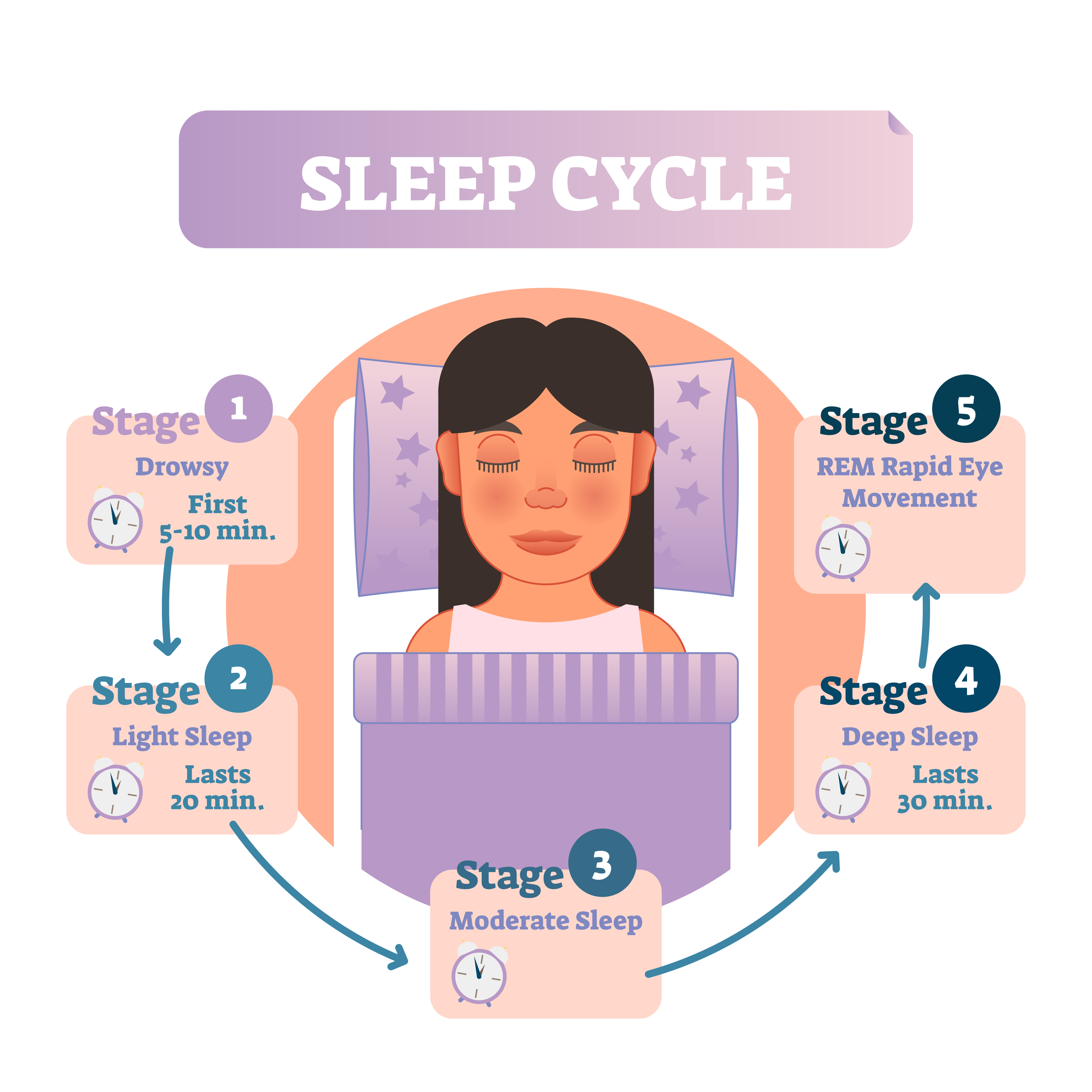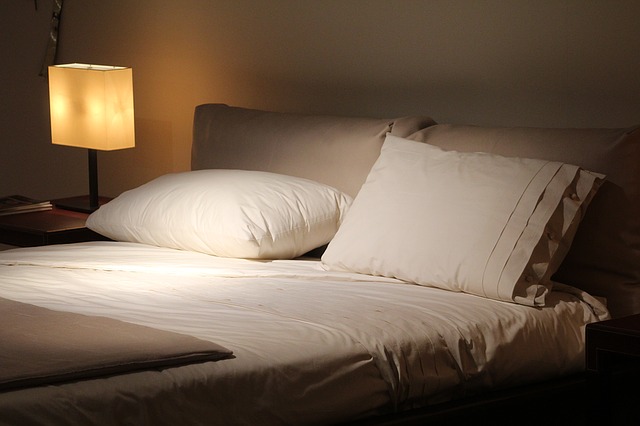In the previous part of this extensive material on the subject of promoting sleep quality, we addressed the issues of all external factors affecting how we sleep. In this post we will focus on the act of falling asleep, sleep and waking up, so as not only to sleep as much as we should, but also to make this dream as valuable as possible.
Length of sleep
It has been widely accepted that 8 hours of sleep is the optimal length of sleep for everyone (more people are recommended to younger people). This is not entirely consistent with the actual state. First of all, just like on any planes, each one of us is different here, and a different amount of sleep may suit him. American presidents are particularly well-known for their short night rest. Donald Trump sleeps a maximum of four hours a day, and Barack Obama and Bill Clinton did not spend more than 6 hours a day. Nicola Tesla was even less asleep, who only needed 2 hours of sleep every night. On the other hand, Roger Federer is known for owing his successes to sleeping almost half a day. The amount of sleep we need is very individual and it takes some time to find the optimal one for us. It is worth giving up popular myths and listening to the body.
REM Phases
When determining the amount of sleep we need, however, it is worth paying attention to one extremely important factor. The full sleep cycle lasts approx. 90 minutes and includes the NREM phase (non- rapid eye movement - name based on observation of eyeball behavior) including 4 stages of sleep, differing in brain bioelectric activity and REM phase ( rapid eye movemnt ) responsible for dreams (along with the length of sleep, the duration of the REM phase increases at the expense of a shorter NREM period). Both of these phases are extremely important (it is very ignorant to consider the NREM phase as not important), and knowledge of their occurrence allows us to optimize the quality of night rest.
In a big simplification, we can assume that the depth of sleep increases from the shallowest at the beginning of the 90-minute cycle to the deepest at its end. Around 90 minutes it falls to initiate another cycle. At the edge of both cycles, sleep is the hardest. And it is this moment that is the most optimal time to wake up. It is then the easiest and already a small stimulus is able to put us in a state of vigil. Waking up in the deep sleep phase, we can be sure that turning off the alarm alone will cause us great difficulty, and leave the bed even more. It will also affect our later well-being and fitness during the day.
Considering the presented dependence, which, although relatively simplified, is extremely effective in practical use, it is worth setting an alarm clock for such an hour that our dream would be a multiplier of the said hour and a half. Logically, the optimal values are one and a half hours (especially recommended in long naps, which in the next part of the article), 3 hours, 4.5 hours, 6 hours, 7.5 hours, 9 hours and an option for extreme sleepers, 10.5 hours. Of these options, it is worth choosing the one that will give us the greatest sense of comfort relative to all day activity.
HERE YOU CAN READ PART I - Sleep - do it right! [part. 1]
In determining the optimal sleep time, we should also take into account our ability to fall asleep, so that the multiplier of one and a half hours contains only the period of sleep. Therefore, for people who take a little more time to fall into the embrace of Morpheus, spending eight hours in bed is optimal.

Sleep position
Another factor that significantly affects the quality of sleep is the position in which we sleep. Often, we do not pay attention to her and arrange ourselves in the way we are used to. Meanwhile, correct bedding allows you not only to enjoy a deeper sleep, but also has a positive effect on the functioning of the body with particular emphasis on the health of the spine.
Lying on the stomach, we prevent proper positioning of the spine. In particular, lumbar lordosis is deepened, the increase of which is one of the most frequently reported postural defects (the effect of sedentary lifestyle). Respiratory function also falls, which is a significant obstacle to deep sleep. A sensible option seems to be sleeping on your back. We have the ability to position the spine in a neutral position, which makes this position a good choice for the spine, although the optimal location of the cervical segment may be uncomfortable. It can also negatively affect respiratory abilities, especially in people with tendencies to snoring, which means that a large part of the population is not too predisposed to it. In addition, it is also indicated that a completely open position does not give us the much needed security at night.
All these disadvantages are deprived of sleeping on the side. However, the necessary condition is to choose the right mattress and cushion, which we talked about in the previous part of the article, because only then can we put our body in a neutral position of the spine. The website on which we sleep is also important. It is indicated that greater psychological comfort (and hence, a quieter sleep) will be obtained when the free hand, i.e. the one resting at the top, will be our dominant hand. An additional argument for right-handers in this aspect is the arrangement of the stomach lying on the left side. Its content then fills the bottom and the convex part, releasing the gastric gullet along with the adjoining esophageal sphincter, whose dysfunction can cause negative stomach symptoms. However, this is an additional hypothetical aspect, which is rather complementing the advantages of sleeping on the left side of the right-handed and should not deter left-handed people from sleeping on the right side.

How to wake up?
When we've already slept the individual optimal number of hours, it's time for a wake-up call that will crown the perfect night's rest. Our main goal in the morning is to bring the body into a state of mobilization and to motivate it to secrete serotonin. The easiest option is to use light for these purposes. The ideal situation is to let in the room in which we are staying, large amounts of sunlight or exposure to it, for example in the garden. However, this is at least a difficult task, especially during the winter.
An extremely interesting solution is the use of light alarm clocks that awaken us with gradually increasing light intensity. It is worth choosing a device equipped with a lamp that imitates sunlight, which will allow you to maximize the rate of secretion of serotonin in the morning and bring the body into a state of daily mobilization.
An interesting solution, addressed to people who work in places with limited access to daylight in the mornings, are all kinds of desktop daylight generators. It can be a natural, effective alternative to coffee, compatible with the natural regulatory mechanisms of the circadian cycle. In addition to the classic lamps, accessories are also available to minimize the invasive use of sunlight, such as the back- lit floodlights. They allow almost direct stimulation of pineal activity without attracting the attention of the surroundings (they look like classic in-ear headphones).
Summarization
To sum up, a dream is an extremely extensive topic, which the vast majority of us devote too little attention to. We reach for further stimulants, stimulating us to act during the day, and in the evening we stuff ourselves with various types of preparations to help them fall asleep. As a result of adaptation for the next measures, we are looking for more and more powerful solutions, often introducing into serious disturbances of the circadian rhythm forcing pharmacological therapy. We try to manipulate hormones on our own by taking melatonin, which our body is doing quite well with endogenous synthesis. All you need to do is pay some attention to sleep hygiene, regulate it and treat it equally with other activities undertaken on a daily basis as part of the so-called healthy lifestyle. It is an indispensable base, without which all kinds of training plans, supplements and diets will be much less effective, and the quality of life will be down at an alarming rate.






